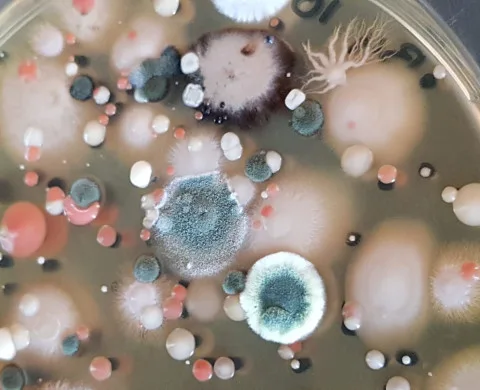Just like humans, animals living in urban areas are constantly prone to metal intoxication. In France, a team of researchers studying the level of metal intoxication in birds have found a strange relation between the color of the plumage and the level of metal toxin in the bird’s body. They observed that the birds with dark shade plumage were better at getting rid of metal toxin from their bloodstream.
The research team working in Paris, captured 97 pigeons to calculate the level of metal toxin in their plumage. After a gap of one year the pigeons were captured again and found a significant difference in the metal toxin levels, depending on feather color.
Researchers explained that the presence of eumelanin, controls the darkness of the feathers in birds. And it is also noticed that the birds residing in urban areas have dark colored feathers than their relatives living in the woods. This is because the birds living in urban areas have more eumelanin pigments in their plumage. A phenomenon which is still under research by some team.
Researchers suspected that eumelanin pigments get attached to toxic metals. Therefore, birds with more eumelanin in their plumage get rid of metal toxins from their blood. And though, the birds living in urban area consume food with substantial amount of toxic metals in them, they did not tend to suffer adverse effects as laying fewer eggs or infertility in males. This gives the pigeon a benefit over the bird with light colored plumage, even after consuming same quality of food. This also explains the reason why there are more birds with darker plumage living in urban areas.
The 97 captured pigeons from different location of Paris, were kept in cages placed in an outdoor environment. Researchers pulled major feathers of the pigeon wings and quantified the amount of metal toxin present in them. The researchers kept the birds in the captivity for a year, while feeding them with a healthy diet, free from metal contamination. The new feathers that grew in this time period were again pulled and analyzed to check the concentration level of metal toxins.
Surprisingly, the results showed that the level of metal toxins in the feathers of all the birds living in captivity has reduced considerably from 328ppm to 89ppm. The birds when captured had nearly same level of toxic metals in their plumage. However, when checked after a year, pigeons that had darker plumage showed more metal toxin in them, indicating that metals were removed from their bloodstream by the presence of eumelanin present in the feathers.
Unfortunately, in the absence of blood samples, the researchers could not concretely confirm that the presence of eumelanin pigments in feathers plays the important part in decreasing the toxic metal concentration in their bloodstream and thus providing the birds with an edge over the birds with lighter color feathers. Nevertheless, the findings deduced from the research suggest that the fact that in urban areas, pigeons with darker feathers are more common, because these feather shields them against health issues led by metal intoxication.
But the rate at which humans are contaminating our environment, these pigeons might not be able to rid of metal toxin at the same rate.
Source: Sciencemag




